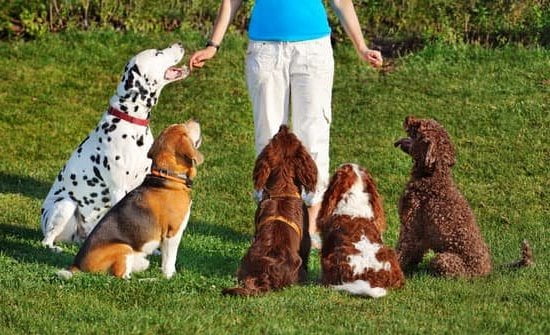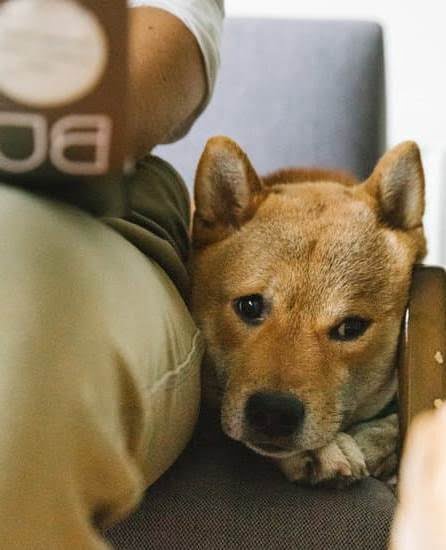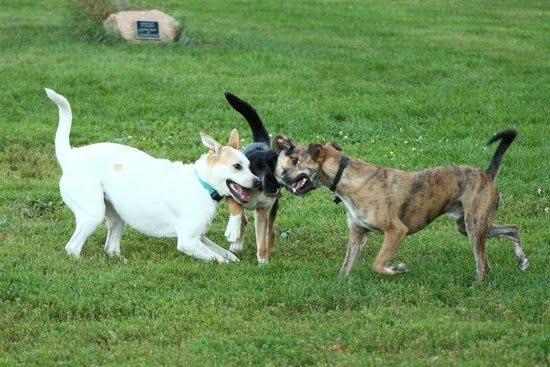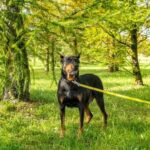Is your dog constantly pulling and barking at other dogs while on a walk? This behavior can be frustrating and challenging to deal with, but it is not uncommon. In this article, we will explore the reasons behind why dogs react to other dogs while on a walk, and provide you with effective training techniques to help you teach your dog to walk past other dogs calmly.
It’s natural for dogs to be curious and reactive towards other dogs while out walking. Understanding this behavior is the first step in addressing it. By exploring the underlying reasons for your dog’s reaction, you can develop a better approach to training and managing their behavior.
Establishing basic obedience and communication with your dog is crucial in setting the foundation for successful training. By building a strong relationship with your furry companion and ensuring they understand basic commands, you can effectively guide them through desensitization training and positive reinforcement techniques. Through consistency, patience, and understanding, it is possible to train your dog to exhibit calm behavior around other dogs while on a walk.
Setting the Foundation
When it comes to training your dog to walk past other dogs, it’s essential to establish a strong foundation of basic obedience and communication. This foundation will serve as the building blocks for successful desensitization training and controlled environment training later on in the process.
Basic obedience includes commands such as sit, stay, come, and walking nicely on a leash without pulling. These commands will be crucial in managing your dog’s behavior around other dogs while on a walk.
Communication with your dog is also key in setting the foundation for training. It’s important to understand your dog’s body language and signals, as well as how to effectively communicate with them using verbal cues and physical gestures. By establishing clear communication, you can better manage your dog’s behavior around other dogs and address any issues that may arise during training.
To set a strong foundation of basic obedience and communication with your dog, consistent practice is key. This means incorporating short training sessions into your daily routine to reinforce commands and strengthen your bond with your furry friend. By building a solid foundation of obedience and communication, you’ll be better equipped to tackle the challenges of training your dog to walk past other dogs.
Overall, setting the foundation of basic obedience and communication with your dog is an essential first step in successfully training them to walk past other dogs. Through consistent practice and clear communication, you can establish a strong bond with your dog while also laying the groundwork for future training steps focused on desensitization, positive reinforcement, controlled environment training, distraction techniques, and more.
Desensitization Training
The key to desensitization training is to start at a distance where your dog notices the presence of another dog, but does not react fearfully or aggressively. This may require some trial and error to determine the right distance for your individual dog. Once you have found this distance, you can begin the process of counter-conditioning by associating the presence of another dog with something positive, such as treats or praise.
It’s important to remember that desensitization training takes time and patience. Rushing the process can be counterproductive and actually reinforce your dog’s reactive behavior. Gradually decreasing the distance between your dog and other dogs as they become more comfortable is crucial for successful desensitization training.
| Desensitization Training Steps | Description |
|---|---|
| Finding the Right Distance | Determine the distance at which your dog notices other dogs without reacting fearfully or aggressively. |
| Counter-Conditioning | Associate the presence of other dogs with something positive, such as treats or praise. |
| Gradual Decrease in Distance | As your dog becomes more comfortable, gradually decrease the distance between them and other dogs for continued desensitization training. |
Positive Reinforcement
Implementing Positive Reinforcement
Using positive reinforcement involves rewarding your dog when they exhibit the behavior you want to encourage. In this case, that means giving treats and praise when your dog remains calm around other dogs during walks. It’s important to use high-value treats that your dog particularly enjoys, such as small pieces of cheese or hot dogs.
Timing Is Key
When using positive reinforcement, timing is crucial. You must immediately reward your dog as soon as they display calm behavior around other dogs. This reinforces the idea that being calm in the presence of other dogs leads to a pleasant experience in the form of treats and praise.
Consistency and Patience
Consistency is essential when using positive reinforcement to train your dog. It may take time for your dog to understand what you are asking of them, so be patient and continue offering rewards for calm behavior on a regular basis. Over time, your dog will learn that remaining calm around other dogs results in positive outcomes for them.
Using Treats and Praise Effectively
Incorporating positive reinforcement into your training routine can help your dog learn how to walk past other dogs without reacting. By consistently rewarding calm behavior with treats and praise, your dog will begin to associate staying calm with positive experiences. With patience and practice, you can successfully train your dog to walk past other dogs without any issues. Remember that seeking professional help is always an option if you encounter specific challenges with this type of training.
Controlled Environment Training
When it comes to training your dog to walk past other dogs, controlled environment training is a crucial step in the process. This involves practicing walking past other dogs in a structured environment, which can help your dog learn how to remain calm and focused even when faced with potential triggers. Here are some key strategies for implementing controlled environment training:
- Start with a well-behaved dog: Before you begin controlled environment training, it’s important to ensure that your dog has already developed basic obedience skills and understands commands such as “sit,” “stay,” and “heel.” This will provide a solid foundation for more advanced training techniques.
- Utilize a safe and controlled space: Find an area where you can practice walking your dog past other dogs in a safe and controlled manner. This could be a quiet park, a designated dog training facility, or even just the backyard of a friend or family member.
- Gradually decrease distance: Begin by walking your dog at a comfortable distance from other dogs. As your dog becomes more comfortable and confident, gradually decrease the distance between them and other dogs. Be sure to always monitor your dog’s body language for signs of distress or anxiety.
By implementing these strategies, you can help your dog become more accustomed to being around other dogs while on walks. With patience, consistency, and positive reinforcement, you can teach your furry friend how to remain calm and composed even in the presence of potential triggers.
Remember that every dog is unique, so it’s important to tailor the training approach to suit your individual pet’s needs. If you’re struggling with this aspect of training, don’t hesitate to seek out the help of an experienced professional trainer who can provide personalized guidance on how to train your specific dog to walk past other dogs.
Distraction Techniques
When it comes to training your dog to walk past other dogs, distraction techniques can be a valuable tool in redirecting your dog’s attention and keeping them focused on you. Here are some techniques to help teach your dog to focus on you instead of other dogs:
- Use high-value treats: Find treats that are especially enticing for your dog and use them to reward them for focusing on you while walking past other dogs.
- Practice “watch me” commands: Teach your dog the command “watch me” and practice it in low-distraction environments before gradually introducing it during walks with other dogs nearby.
- Engage in interactive play: Bring along their favorite toy or engage in a quick game of tug-of-war to shift their focus away from other dogs and onto the activity at hand.
It is important to remember that consistency is key when implementing distraction techniques. It may take time for your dog to learn to consistently focus on you, so be patient and persistent in your training efforts. With regular practice and positive reinforcement, your dog can learn to maintain their attention on you even when passing by other dogs.
Ultimately, the goal is for your dog to associate other dogs with positive experiences and rewards, rather than feeling anxious or reactive. By employing distraction techniques and teaching them to focus on you, you can help build their confidence and improve their behavior while walking past other dogs.
Consistency Is Key
Commit to a Training Schedule
Training your dog to walk past other dogs without reacting takes time and dedication. It’s important to commit to a regular training schedule, whether it’s daily or several times a week. Consistency in training will help reinforce the desired behavior and minimize any setbacks. Set aside specific time slots for training sessions, and stick to them as much as possible.
Repetition and Practice
Repetition is crucial when it comes to desensitization training. The more opportunities you give your dog to practice walking past other dogs in a controlled environment, the more comfortable they will become with the situation. As you continue with desensitization training, gradually decrease the distance between your dog and other dogs to further reinforce their ability to remain calm.
Stay Patient and Positive
Consistency also means remaining patient and positive throughout the training process. It’s normal for progress to be slow at times, especially if your dog has a strong reaction to other dogs. Stay calm, avoid showing frustration, and always end each training session on a positive note. Remember that every small step forward is an achievement and deserves praise.
By maintaining consistency in your training schedule and approach, you can help your dog build confidence and trust in their ability to walk past other dogs calmly. Remember that every dog is different, so it’s important to be patient, persistent, and adaptable in your approach. If you consistently follow the outlined steps while being patient with your pet’s pace of learning/adjusting;
Seeking Professional Help
In conclusion, training your dog to walk past other dogs can be a challenging but rewarding process. It’s important to understand the reasons behind your dog’s reactive behavior and lay a solid foundation of obedience and communication. Desensitization training and positive reinforcement play crucial roles in helping your dog remain calm around other dogs, while controlled environment training and distraction techniques help to reinforce good behavior.
Consistency is key in this training process, as regular practice and a structured approach will yield the best results. However, there may be instances where specific issues arise that require the expertise of a professional dog trainer. Knowing when to seek professional help is essential for addressing any unique or more complex issues that may arise during the training process.
Overall, with patience, dedication, and the right approach, you can train your dog to walk past other dogs calmly and confidently. By understanding your dog’s behavior, establishing clear communication, and utilizing positive reinforcement techniques, you can help your furry friend navigate the world outside with ease and enjoyment. Remember that every dog is unique, so don’t hesitate to seek professional guidance if needed for a tailored approach to address any specific challenges you may encounter along the way.
Frequently Asked Questions
How Do I Stop My Dog From Lunging at Other Dogs on Walks?
You can stop your dog from lunging at other dogs on walks by first identifying the trigger and working on desensitizing them to it. Using positive reinforcement and redirection techniques can help change their behavior over time.
Why Does My Dog Go Crazy When He Sees Other Dogs?
Dogs may go crazy when they see other dogs due to excitement, frustration, or fear. It’s important to understand the root cause of their reaction in order to address it effectively and prevent any aggressive behavior.
How Do I Get My Dog to Stop Reacting to Other Dogs?
Getting your dog to stop reacting to other dogs requires patience and consistent training. Using commands like “watch me” or “leave it” can help redirect their attention and teach them to remain calm in the presence of other dogs. Gradual exposure and positive reinforcement are key in changing their reactive behavior.

Welcome to the blog! I am a professional dog trainer and have been working with dogs for many years. In this blog, I will be discussing various topics related to dog training, including tips, tricks, and advice. I hope you find this information helpful and informative. Thanks for reading!





